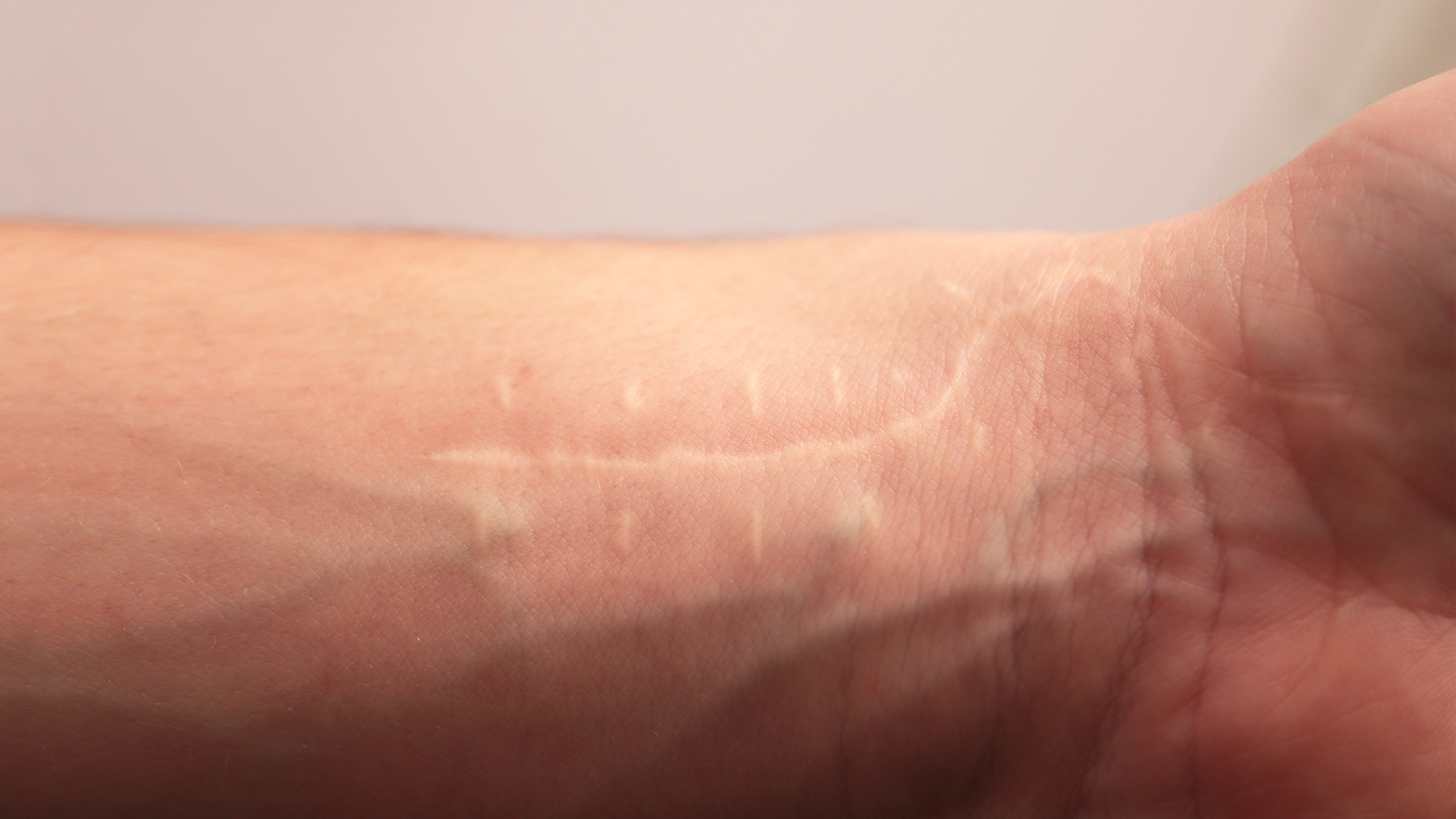
What Is Carpal Tunnel Surgery?

Meet Our Carpal Tunnel Surgery Specialist
Find a Specialist Near You
Get the care you deserve close to home at one of our New Jersey or New York Locations.
About Carpal Tunnel Surgery

Who Might Need Carpal Tunnel Surgery?
Carpal tunnel release (CTR) surgery is the most performed hand and wrist surgery in the United States, with more than 400,000 procedures carried out each year.
Carpal tunnel surgery is typically recommended for people who have tried other treatments, such as splinting, medication, and physical therapy, but have not found relief from their symptoms.
It may also be recommended for people who have severe or persistent symptoms, such as numbness, tingling, or weakness in the hand, that interfere with daily activities or work. Pain in the neck, shoulder, arm, and hand can also be a symptom of carpal tunnel syndrome.
The most common conditions that require carpal tunnel surgery are:
- Carpal tunnel syndrome
- Nerve damage
- Bone spurs
A conclusive diagnosis of carpal tunnel syndrome and its severity can be made through a two-part electrical test called nerve conduction test, which provides the most reliable evidence for this condition.
At OrthoEast, our team will evaluate your condition and determine whether carpal tunnel surgery is the best option for you.
Our carpal tunnel surgery specialist at OrthoEast is Dr. Andrew McGinnis.
In addition to carpal tunnel surgery, our physicians are also experts in fields such as minimally invasive spine surgery, Tommy John surgery and various arthroscopy procedures.
Our board-certified physicians provide comprehensive care to each and every patient, which allows us to guide you through your procedure with enhanced comfort and confidence.
What Is Carpal Tunnel Syndrome?
Carpal tunnel syndrome occurs when the median nerve, which runs from the forearm into the hand, becomes compressed or squeezed as it travels through the wrist at the carpal tunnel.
One common cause of compressed nerves is bone spurs, also known as osteophytes. When bone spurs compress the median nerve in the wrist, they can cause pain, weakness, nerve damage, and a loss of sensation in the affected hands and fingers. Carpal tunnel syndrome can also be caused by repetitive motions, injuries, and medical conditions such as diabetes and arthritis.
If the carpal tunnel syndrome is not severe, corticosteroid injections can be used to treat the condition, which can improve your movement due to the injection of methylprednisolone. If the carpal tunnel syndrome is more severe, we might recommend surgery.
The procedure for carpal tunnel syndrome, known as carpal tunnel release surgery, can be performed as an open surgery or endoscopically, through a small incision.
The procedure focuses on creating more space for the median nerve.
This nerve runs from the forearm into the hand and is responsible for providing sensation to the palm, thumb, index finger, and middle finger.
In some cases, carpal tunnel syndrome can lead to nerve damage that affects the function of the hand and wrist. This nerve damage can cause weakness, loss of sensation, and other symptoms that can make it difficult to perform everyday activities.
How Is Carpal Tunnel Syndrome Surgery Performed?
Here is an overview of how carpal tunnel surgery is performed:
- Anesthesia: Before the surgery, you are given anesthesia, which may be local anesthesia to numb the wrist and hand, or general anesthesia to put you to sleep.
- Incision: We make a small incision in the palm of the hand, near the wrist. In some cases, the incision may be made on the back of the hand.
- Ligament cutting: We then cut the carpal ligament, which is the tissue that is pressing on the median nerve. This relieves the pressure on the nerve and allows it to function properly.
- Closure: The incision is closed with stitches or surgical staples, and a bulky bandage or splint is applied to the hand and wrist.
- Recovery: You are monitored in the recovery room for a short period before being discharged. Most patients are able to return home after the surgery, without needing to stay in the hospital over night.
Carpal Tunnel Surgery Procedures at OrthoEast
At OrthoEast, our board-certified physicians perform several types of carpal tunnel surgery, based on the severity and cause of the carpal tunnel syndrome. The procedures we perform include:
During this procedure, we make a small incision in the wrist and insert an endoscope, which allows us to visualize the carpal tunnel and the transverse carpal ligament responsible for compressing the median nerve.
We then use a special tool to cut the transverse carpal ligament, which relieves pressure on the median nerve and alleviates symptoms.
Compared to traditional open carpal tunnel release surgery, endoscopic carpal tunnel release offers several benefits, including smaller incisions, less scarring, and quicker recovery time.
During this procedure, which offers a historically low complication rate, we make a larger incision in the wrist to access and cut the ligament that is pressing on the median nerve.
Once we access the carpal tunnel, we use a small surgical instrument to carefully cut the transverse carpal ligament, which relieves the pressure on the median nerve.
After the ligament has been cut, we close the incision with stitches, and apply a bandage or splint to immobilize the wrist and protect it from further damage.
Mini-open carpal tunnel release combines the benefits of both endoscopic and open release techniques.
During this surgery, we make a small incision in the palm of the hand, similar to the incision in open release surgery.
After, we insert a special instrument with a small camera attached to it to visualize the carpal tunnel and guide the release of the transverse carpal ligament.
This allows us for a more precise and targeted approach to the surgery.
Ultrasound-guided carpal tunnel release is a minimally invasive procedure that uses ultrasound technology to guide the release of the transverse carpal ligament.
During this procedure, we use an ultrasound machine to visualize the inside of the wrist and locate the transverse carpal ligament.
Then, we make small incisions in the wrist, and insert a specialized instrument to cut the ligament.
How To Prepare for Carpal Tunnel Surgery
Before surgery, you will undergo a physical examination and imaging tests to assess the severity of your carpal tunnel syndrome.
Also, you may be instructed to stop taking certain medications, such as blood thinners, to reduce the risk of bleeding during the procedure. You may also be advised to stop eating or drinking for a certain period prior to the surgery.
It’s important to arrange for transportation to and from the surgery center or hospital, as you may not be able to drive immediately following the procedure.
You may be given specific instructions on how to care for the surgical site and manage pain after the procedure, to ensure proper healing and reduce the risk of complications.
How Long Does Carpal Tunnel Surgery Take?
The length of the surgery depends on the type of procedure being performed and the severity of the carpal tunnel syndrome.
On average, carpal tunnel surgery takes about 30 minutes to one hour to complete.
Carpal Tunnel Surgery Aftercare
After carpal tunnel surgery, you may experience some pain, swelling, and stiffness in your hand and wrist. You will need to wear a splint for a few weeks to immobilize your wrist and promote healing.
Guidelines for carpal tunnel surgery aftercare include:
- Keep your hand elevated: Elevating your hand above your heart can help reduce swelling and promote healing. You should keep your hand elevated as much as possible for the first few days after surgery.
- Ice your hand: Applying ice to your hand can also help reduce swelling and pain. You can use a cold pack or wrap ice in a towel and apply it to your hand for 20 minutes at a time, several times a day.
- Take pain medication as prescribed: We may prescribe pain medication to help you manage post-operative pain. It is important to take medications as prescribed to stay comfortable and manage discomfort.
- Attend physical therapy: Physical therapy can help improve your range of motion and strength in your hand and wrist after surgery. We may refer you to a physical therapist who will develop a customized rehabilitation program for you.
- Avoid hard activities: It is important to avoid activities that may strain your hand and wrist while you are recovering. This includes heavy lifting, gripping, and repetitive motions.
- Keep your incision site clean: It is important to keep your incision site clean and dry to prevent infection. We will provide you with instructions on how to care for your incision site.
Carpal Tunnel Surgery Recovery Time
Factors such as your overall health, the severity of your condition, and the type of surgery performed all play a role in determining the length of time needed for recovery following the procedure.
Here are some general guidelines regarding the surgery recovery time:
- Immediately after surgery: You will be monitored in the recovery room for a short period of time before being discharged. It is important to keep your hand elevated to reduce swelling and promote healing.
- First few days: You may experience pain and discomfort in your hand and wrist, and your hand may be wrapped in a bulky bandage or splint. It is important to keep the bandage or splint dry and clean, and to avoid using your hand for any strenuous activities.
- First few weeks: You may be instructed to perform gentle hand and finger exercises to prevent stiffness and improve mobility. It is important to follow the instructions provided by our team regarding activity level, as overuse or improper use of your hand can delay healing.
- First few months: You may continue to experience some discomfort and swelling, but your symptoms should gradually improve over time. Most people are able to return to their daily routines within 4-6 weeks. However, full recovery can take several months to achieve, depending on your condition.
Schedule a Consultation With Our Carpal Tunnel Specialists at OrthoEast
We understand this is a lot of information to take in! That’s why our compassionate team will work with you to ensure that you feel comfortable and confident in your decision.
Don’t let carpal tunnel syndrome limit your quality of life. Find us at one of our New Jersey or New York locations:
- Wayne, NJ
- Morristown, NJ
- Clifton, NJ
- Linden, NJ
- Wall Township, NJ
- New York, NY








